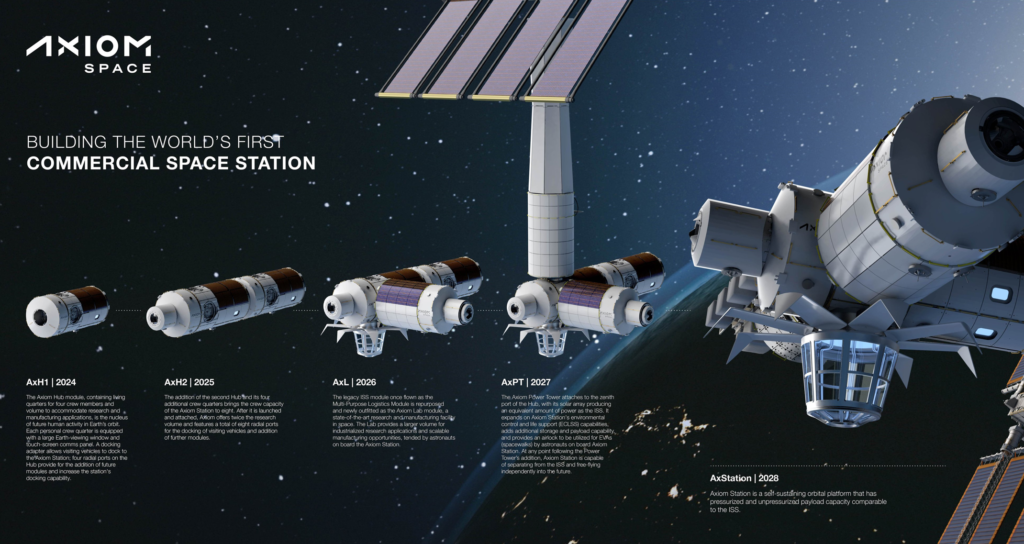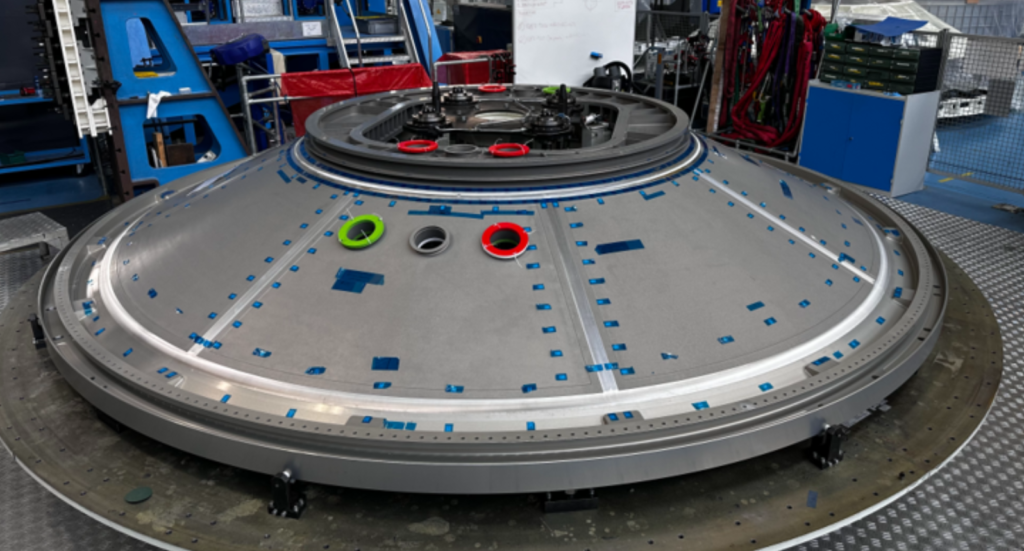Back in 2020, NASA selected Axiom Space to provide at least one habitable commercial module to be attached to the International Space Station. At the time they were awarded $140 million to begin development and manufacturing.
Since then the company has contracted out that core station build and is nearing the completion of the initial module. However, new information suggests they are running into financial issues that could reduce the station’s size and threaten the project as a whole. Here I will go more in-depth into the concerns, current progress, what this means for the future, and more.
Financial & Time Concerns

Recently, an article from Forbes reported some serious concerns the company was facing. They were quoted saying, “Sources familiar with the company’s operations told Forbes that co-founder and CEO Michael Suffredini, who spent 30 years at NASA, ran Axiom like a big government program instead of the resource-constrained startup it really was. His mandate to staff up to 800 workers by the end of 2022 led to mass hiring so detached from product development needs that new engineers often found themselves with nothing to do” they said.
They go on to mention general financial issues and report that they are behind on payments to one of their main contractors Thales Alenia Space. This is the group actually building the modules and is nearing completion on one.
Recently in August the company tweeted saying, “Axiom Station’s Habitat One pressure vessel nears completion! Thales Alenia Space has welded the Axial Bulkhead to the Cone Panel and is moving toward quality inspection. With this, only three more welds remain until the pressure vessel is complete and Hab One is prepared for shipping to Houston.”
One problem, however, is the time constartint. For context, the plan with Axiom Station is to build these modules and launch them one by one to be attached to the International Space Station. In theory, they would complete this process over the next few years and then have a self-sustaining station ready before the ISS deorbits.
That being said, with the current ISS retirement date set around 2030, the continued delays Axiom is facing are becoming much more serious. When they first were founded in 2016 their goal was to have launched the initial segment by 2020. As of today, the company is now estimating the first module will be launched in 2026.
Importantly, within Axiom’s plan, there are four main modules that combine to create a station capable of supporting itself. You first have Axiom Hab One. This is the first module and it’s meant to provide quarters for four crew members and volume to accommodate research and manufacturing applications. Next up is Axiom’s Hab Two module. Similar to Hab One this module is intended to provide quarters for an additional four crew members allowing the station to support up to eight crew.
The third module would be Axiom’s Research & Manufacturing Facility. While the two initial segments were very similar, this module has no crew living accommodations and instead focuses on research and manufacturing. Finally, the last module is the Power Thermal module. Axiom’s Power Thermal module would provide power and thermal capacity equivalent to that of the ISS via solar array to support the station so that Axiom Station will be able to support itself once it disconnects from the ISS.
With this in mind, and the first module scheduled for 2026 at the earliest, it means time is running out. Looking at a graphic provided by the company in the past, you can see each of these modules and the corresponding year they would be launched. This model suggests that 4 years after the first module is launched, assuming the next three come each of the following years without delay, the station would be fully self-sustaining.
Following that same timeline but with current estimates would mean it would be ready in 2030, and that’s assuming the first module is launched in 2026 and all the following stay on schedule. In other words, the current estimates suggest that something might need to change in order for the station to be ready before the ISS deorbits. The partnership between NASA and Axiom and access to the station were always big benefits that no other company was awarded. At this point, it seems like they are running out of time and its forcing their hand.
They need to get the station self-sustaining before it undocks from the ISS. In order to do that, they can either launch all four modules or alter the design. In the Forbes Article, they are quoted saying, “Former employees said Axiom has been scrambling for the past year to design a second module that could be rushed into orbit with sufficient power generation capabilities to create a viable free-flying station before then.”
This statement suggests the company believes they will only be able to launch two modules at best before the retirement of the ISS and are trying to figure out the best option. Besides the initial living quarters provided by Hab One, the Power Thermal module really is the next most important. If they do go down that route and alter the design, we might expect a smaller and less powerful thermal module than originally planned.
All of this comes in addition to the change in leadership going on at the company. Last month they transitioned the CEO to the Board of Directors. They were quoted saying, “Axiom Space today announced the transition of CEO Mike Suffredini to a position on the company’s Board of Directors, following eight years of leading the company to significant achievements in the space industry.”
Current Progress

In terms of progress, in a statement, the company says, “The construction of the world’s first commercial space station is underway. Following completing preliminary and critical design reviews in collaboration with NASA, our partners at Thales Alenia Space began welding and machining activities for the primary structures of Axiom Station’s first module. The first pieces of fabricated flight hardware are beginning to come together, and the assembled module will join us in Houston soon, where we will complete the final assembly and integration” they said.
In relation to this, the Axiom President was quoted saying, “The pressure vessel will arrive in Houston next year, and then we’ll do all the final outfitting at our spaceport facility. And in the 50-year history of human space flight and Houston it will be the first human-rated spacecraft built in Houston” he pointed out. From there Axiom would complete the initial module before launching it in 2026 to be attached to the ISS.
In another quote, the senior quality engineer pointed out, “So for the welding, the team is working on the aft section. We are currently welding flight hardware for the cone, and on the window side, we are doing the qualification model testing for the external window.” There are four windows on each Axiom habitation module and each of them is made by the internal and external parts. By now, these four windows have all been tested and are now ready to be installed on the module. More specifically the next step is the completion of the qualification of the external window and then the assembly of the external window flight model and integration on the Axiom habitation module.
Based on this information, what will be interesting to see in the future is what if any changes are made to the modules. As partially mentioned before, Hab One is the first module which contains living quarters for four crew members and approximately 40 cubic meters of interior volume to accommodate research and manufacturing applications. Inside the module, you can expect glove boxes, microscopes, 3D printers, materials testing equipment, and more. Axiom describes it as the nucleus of future human activity in Earth’s orbit.
Each personal crew quarter is equipped with a large Earth-viewing window and touch-screen comms panel. A docking adapter allows visiting vehicles to dock to the Axiom Station. Four radial ports on the hub provide for the addition of future modules and increase the station’s docking capability. As the initial module, this feature is especially important. It will have propulsion, guidance, navigation, and station control systems. The first windowed pressurized module is approximately 11 meters long and 4.2 meters in diameter at the widest part. These features all make it clear that it’s a necessary module, but what about some of the others.
For example, the third module, or Axiom’s Research & Manufacturing Facility module, would be expected to launch relatively soon after the second module. Axiom highlights that “It provides access to the unique microgravity environment as a platform to conduct innovative research, product development, process improvement, and manufacturing. The module would also launch and arrive at the station with an extension on the end. This extension (or viewing room) will be detached from the lab module and moved toward the bottom of Axiom Hab One. While interesting, its features like these that might be exactly what the company needs to skip in pursuit of a station that can support itself.
Back when Axiom was selected by NASA, the administrator of the agency said, “Axiom’s work to develop a commercial destination in space is a critical step for NASA to meet its long-term needs for astronaut training, scientific research, and technology demonstrations in low-Earth orbit. We are transforming the way NASA works with industry to benefit the global economy and advance space exploration. It is a similar partnership that this year will return the capability of American astronauts to launch to the space station on American rockets from American soil” he said.
Conclusion
Axiom Space is reported to be running into both financial and time constraints as it attempts to create the first commercial space station initially attached to the ISS. In reality, we could end up seeing a change in plans and only two modules launched instead of 4 to make sure it’s ready before the ISS is retired.
